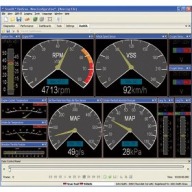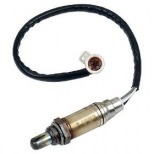It is also one of the most misdiagnosed, electrical emissions components. Since this sometimes-expensive car part is a non-re-terminable item at most part stores, it is a good idea to confirm diagnosis before replacement.
And often during my diagnostic procedure I will uncover the cause of the check engine light problem that is less expensive then a replacement o2.
Find Your Online Car Repair Manual Today! ->>
To follow is a run down on how to diagnose check engine light codes in the PO171-PO175 range, which are your most common o2 codes.
How to Diagnose oxygen sensors
The data stream voltage for the O2 should vary quickly from about 200 to 800 mV. A good rule of thumb is that the voltage should vary above and below the half way mark of 500 milivolts in a steady even pattern.
If you have sensors with a fixed voltage or a voltage that is always below 500, then you want to check the wiring to the sensor.
This could relate to a problem in the fuel system, as in the exhaust gases are actually lean or rich due to a failure of a fuel system component.
A few examples would be a leaky fuel injector, a misfire condition, vacuum leaks, or even a plugged air filter.
So to clarify my point, if you set an oxygen sensor code this does not always indicate that the oxygen sensor needs to be replaced.
What the oxygen sensor code will for sure indicate is that check engine light diagnosis is necessary.
When to replace O2 sensors
Again, this does not mean that the car parts need to be replaced. But it is an indication that the operation should be checked carefully. The Actron 9180 is an entry-level tool for diy auto mechanics and has an oxygen sensor test.
On some occasions I have pulled an oxygen sensor code from the computer and then when I connected my scan tool found a fixed voltage value. When I run into this the first thing I do is a physical inspection of the oxygen sensor itself.
The oxygen sensors are mounted in the exhaust. That is one of the lowest parts on the automobile. Although some manufacturers protect their oxygen sensors with shields it is still possible to run over road debris and break the sensor.
A no responsive O2 sensor will be assigned a fixed voltage value by the vehicles, electronic control module. If you pull up the data stream, and you see no fluctuation and no lean to rich switching and take a minute to inspect the exhaust for damage parts.










